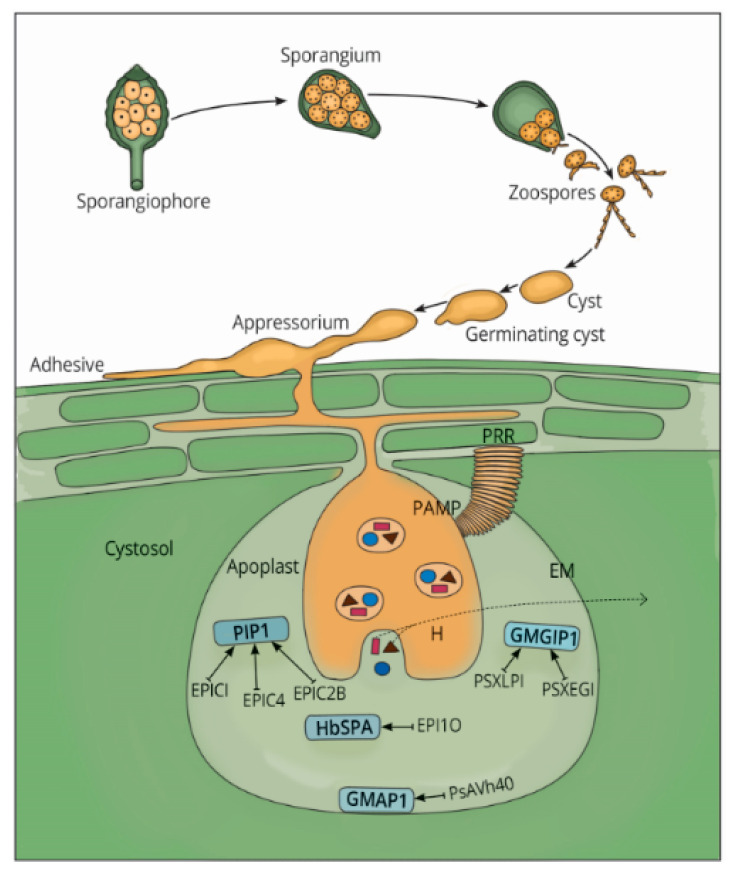Figure 1.
Proposed model of Phytophthora species infection process and the apoplastic effectors inhibiting plant proteases. The dispersal phase starts with multinucleate sporangium which releases zoospores which encyst on the plant host then germinate to swelling at the end of the germ tube which attach to the host cell using adhesive. Thereafter, it penetrates the host cell using the appressorium to form intercellular hyphae which is commonly known as infection vesicle that grows between host cells to form a haustorium (H) that invaginates the host cell membrane (EM) to secrete apoplatic effectors (in blue) RxLRs (purple) and CRNs (brown). Apoplastic effectors inhibit (→) key plant protease in bold; Phytophthora Inhibited Protease (PIP1), Hevea brasiliensis serine protease (HbSPA), soybean aspartic protease(GMAP1) and soybean glucanase (GMGIP1). The conserved PAMP is perceived by the host plant recognition receptor (PRR) leading to the activation of the host’s first line of defense.

